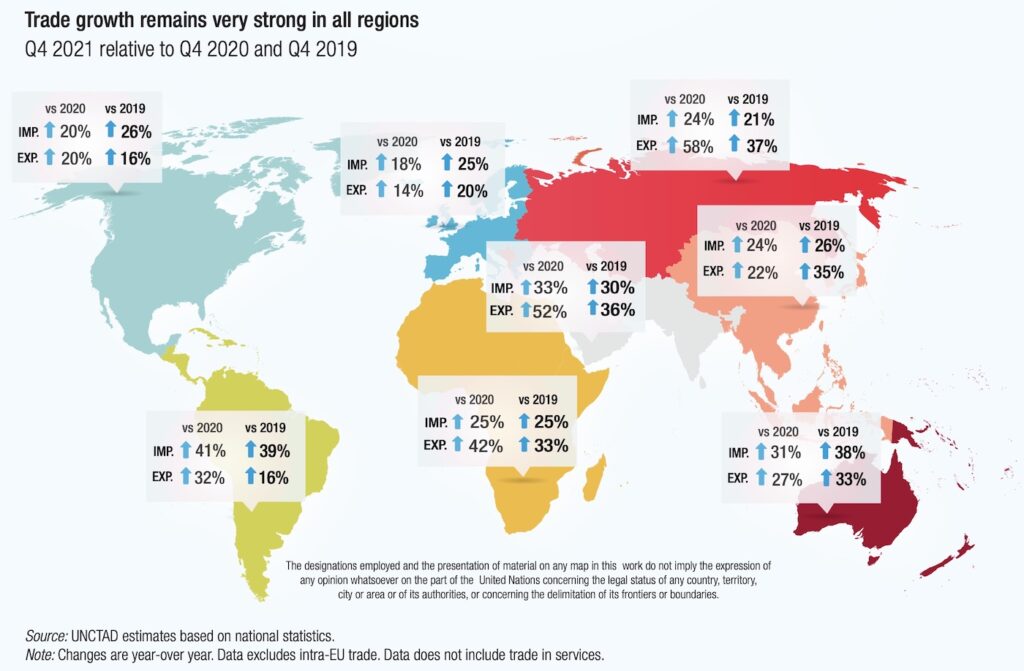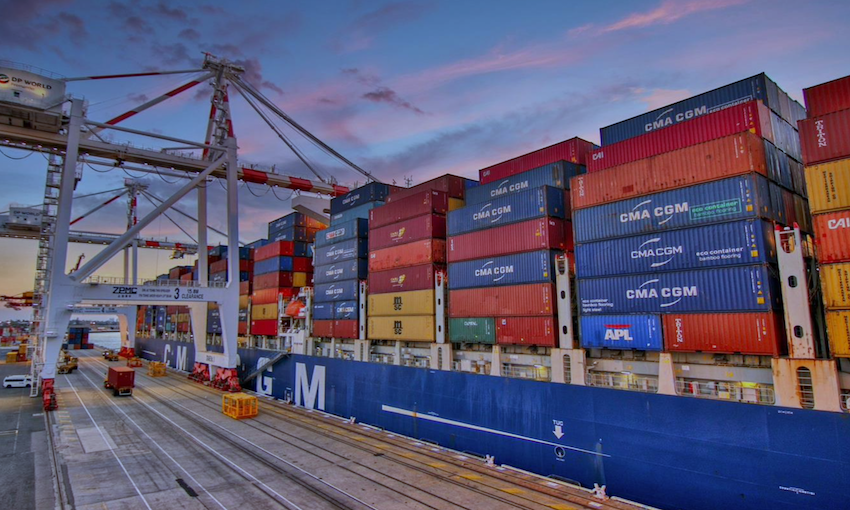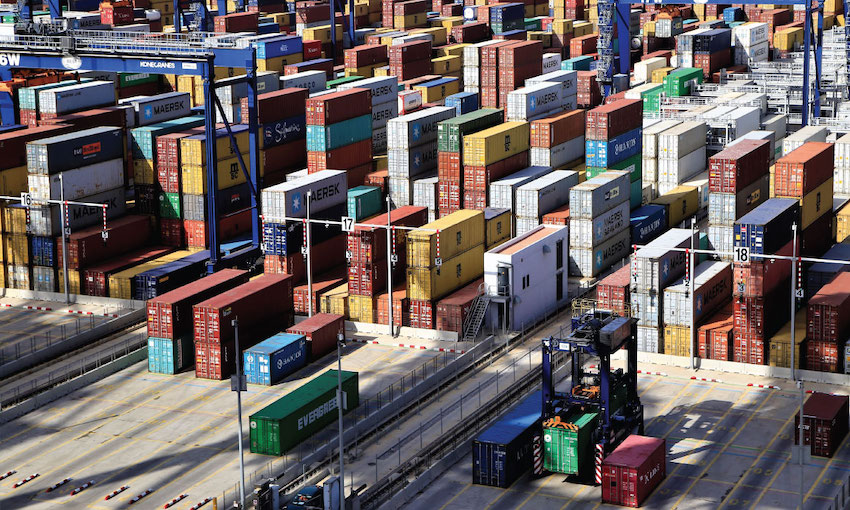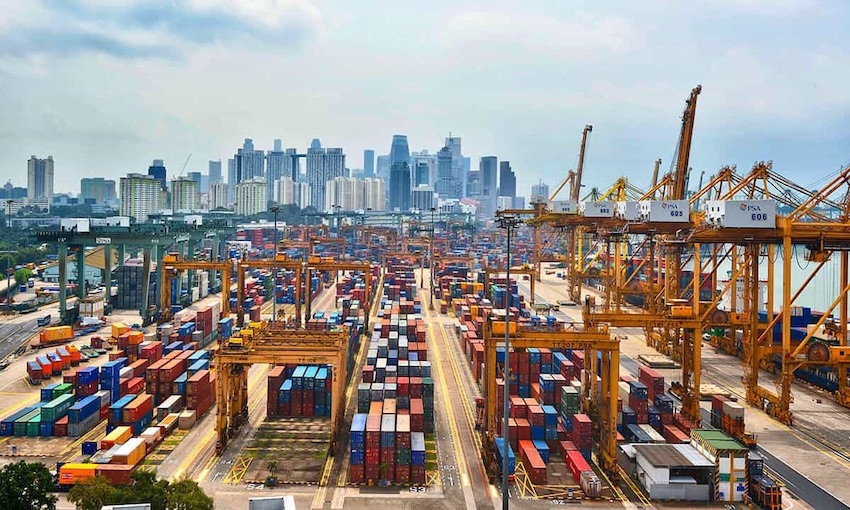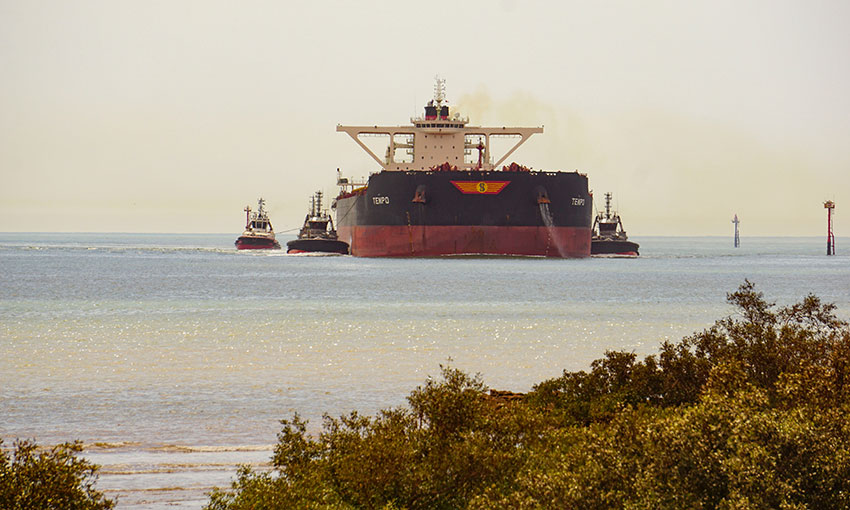UNCTAD’s Global Trade Update reveals that global trade reached a record high in 2021, about US$28.5 trillion, an increase of almost 13% relative to pre-pandemic levels.
Data from the United Nations’ trade and development body shows that global trade growth accelerated during the last quarter of 2021 (October-December), but is expected to slow in the first quarter 2022.
“During Q4 2021, trade in goods remained strong and trade in services finally returned to its pre-pandemic levels,” the report stated.
Developing countries’ trade outperformed that of developed countries in Q4 2021. And, south-south trade growth was above the global average.
UNCTAD reported that trade in goods and trade in services followed similar patterns during 2021, with stronger increases during the first half of the year. Trade growth continued to be positive for both goods and services in Q3 2021 and especially in Q4 2021.
“During Q4 2021, trade in goods increased by almost US$200 billion to reach about US$5.8 trillion, a new record,” the report stated.
During the same period, trade in services rose by about US$50 billion to reach about US$1.6 trillion, a value just above pre-pandemic levels.
The positive trend for international trade in 2021 was largely the result of increases in commodity prices, subsiding pandemic restrictions and a strong recovery in demand due to economic stimulus packages. As these trends are likely to abate, international trade trends are expected to normalise during 2022.
According to UNCTAD, overall the evolution of world trade in 2022 is likely to be affected by the following factors:
- slower than expected economic growth;
- continuing challenges for global supply chains;
- trade agreements and regionalisation trends;
- transition towards a greener global economy; and
- rising concerns about debt sustainability.
“The COVID-19 pandemic resulted in unprecedented pressures on supply chains. Logistic disruptions, a semiconductor shortage and rising energy prices have further contributed to supply shortages and spiralling shipping costs,” the report stated.
“As a result, major companies have become strongly focused on improving reliability and managing risks for their supply networks, but delays have persisted nevertheless.
“Efforts to shorten supply chains and to diversify suppliers could affect global trade patterns during 2022.”
Trade patterns in 2022 are expected to reflect the increasing global demand for products that are environmentally sustainable, according to UNCTAD.
“Such patterns may also be supported by government policies regulating the trade of high-carbon products.
“Moreover, global trade patterns could also be influenced by increased demand of strategic commodities required to support greener energy alternatives (e.g., cobalt, lithium, and rare earth metals).”
